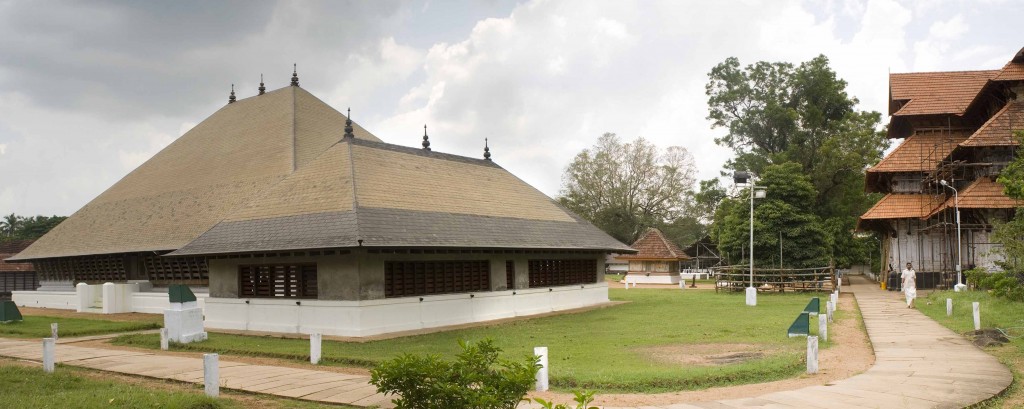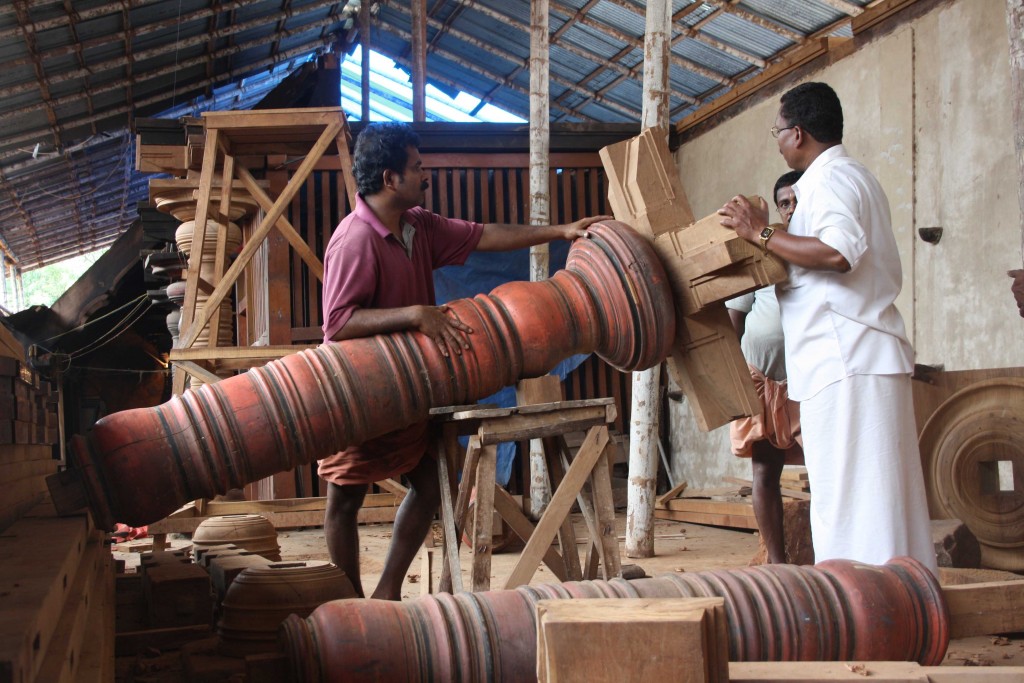
5 Sep, 2015
Indian, Laotian temples lead 2015 UNESCO Asia‐Pacific Heritage Awards
BANGKOK, 1 September 2015 — The Conservation of the Sree Vadakkunnathan Temple in Kerala, India has received the Award of Excellence in this year’s UNESCO Asia‐Pacific Awards for Cultural Heritage Conservation. Xieng Thong Temple in Luang Prabang won the Award of Merit and became the first project in Lao PDR to receive the UNESCO Asia‐Pacific Heritage Award.
 Sree Vadakkunnathan Temple |
A total of 12 winning projects from five countries, – India, China, Lao PDR, Australia and Thailand –
have been recognized in this year’s Heritage Awards. A panel of international conservation experts met in June to review 36 entries from across the Asia‐Pacific region.
Tim Curtis, Chair of the Jury and Chief of UNESCO Bangkok’s Culture Unit, said he was impressed with the quality of the entries received this year as well as the geographical expanse they covered, showing that the awards’ message of the importance of cultural preservation is gaining momentum in the region.
“The Jury were very pleased with this year’s submissions, which included fascinating projects from across Asia‐Pacific. This reflects a continuing trend over the years where we are seeing a broader diversity of typologies being submitted to the Awards coming from a wider geographical spread,” said Dr. Curtis.
He added that he was pleased with the significant increase in the number of entries in the New Design in Heritage Contexts category – awarded this year to Port Arthur Penitentiary in Tasmania, Australia – which he said shows “how design innovation can support conservation efforts and enhance the heritage value of a place.”
 Sree Vadakkunnathan Temple |
The Award of Excellence for the Conservation of Sree Vadakkunnathan Temple, Thrissur in Kerala, India recognizes the remarkable conservation effort undertaken at the sacred site which employed age‐old rituals and conservation techniques drawn from vastu shastra, an Indian traditional science focusing on architecture and construction. As such, the tangible attributes of the temple are inextricably linked with its intangible heritage which dates back generations, thus ensuring that “spirit of place” resonates throughout the site.
Other Awardees included:
Awards of Distinction:
Saltpans of Yim Tin Tsai, Hong Kong SAR, China
J.N. Petit Institute, Mumbai, India
Awards of Merit:
Cangdong Heritage Education Centre, Kaiping City, Guangdong Province, China
Pingyao Courtyard House, Shanxi Province, China
Xieng Thong Temple, Luang Prabang, Lao PDR
Baan Luang Rajamaitri, Muang District, Chantaburi, Thailand
Honourable Mention:
Wanslea Cancer Wellness Centre, Cottesloe, Western Australia, Australia
Sanfang Qixiang, Fuzhou, Fujian, China
Parvati Nandan Ganapati Temple, Pune, Maharashtra, India
YHA Mei Ho House Youth Hostel, Hong Kong SAR, China
Award for New Design in Heritage Contexts:
Port Arthur Penitentiary, Tasmania, Australia
The UNESCO Asia‐Pacific Awards for Cultural Heritage Conservation programme recognizes the efforts of private individuals and organizations that have successfully restored and conserved structures and buildings of heritage value in the region. By recognizing private efforts to restore and adapt historic properties the awards aim to encourage other property owners to undertake conservation projects within their communities, either independently or by seeking public‐private partnerships.
The winners were selected based on how the projects reflected a clear understanding and application of various criteria, such as the articulation of the spirit of place, technical achievement, appropriate use or adaption, and the project’s contribution to the surrounding environment as well as the local community’s cultural and historical continuity.
Eligible projects must be more than 50 years old and the restoration must have been completed within the past 10 years. Buildings with a new use must have also been in viable use for at least one year from the date of the awards announcement.
The 2014 and 2015 cycles of the Heritage Awards are generously supported by the Sino‐Ocean Charity Foundation (Beijing, People’s Republic of China): http://www.sinooceanland.com
Further information about the UNESCO Asia‐Pacific Heritage Awards for Cultural Heritage Conservation and this year’s winning entries can be found at: http://www.unescobkk.org/culture/heritage/awards/
The Call for Entries for the 2016 UNESCO Heritage Awardsshall be made in October 2015, and further details will be available on the awards website.



Liked this article? Share it!